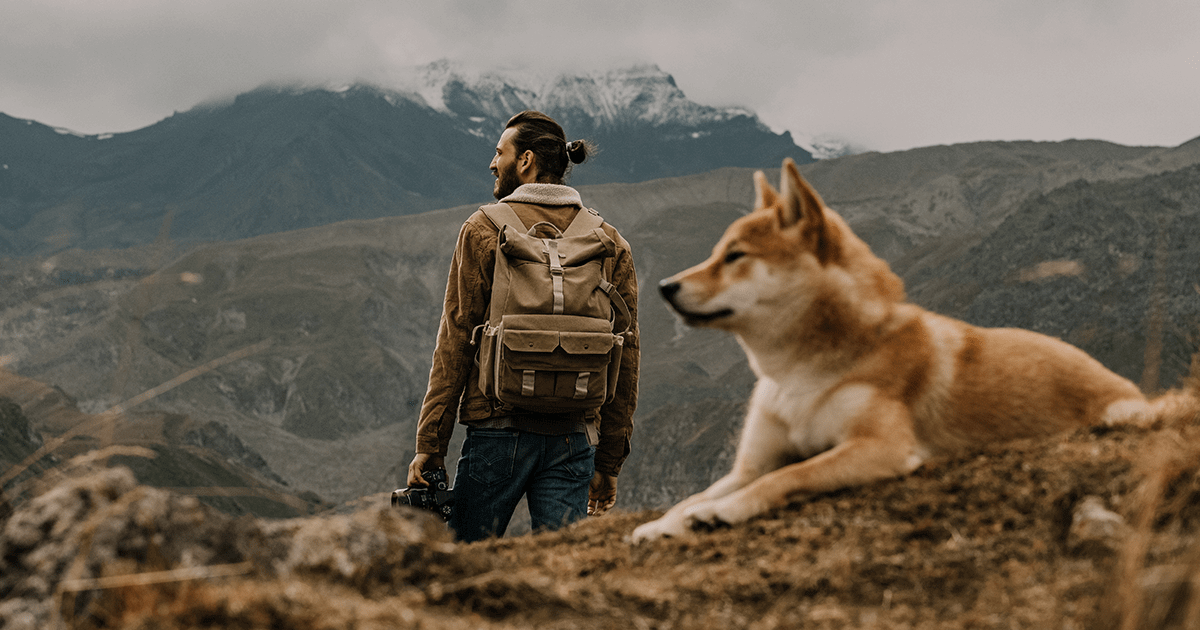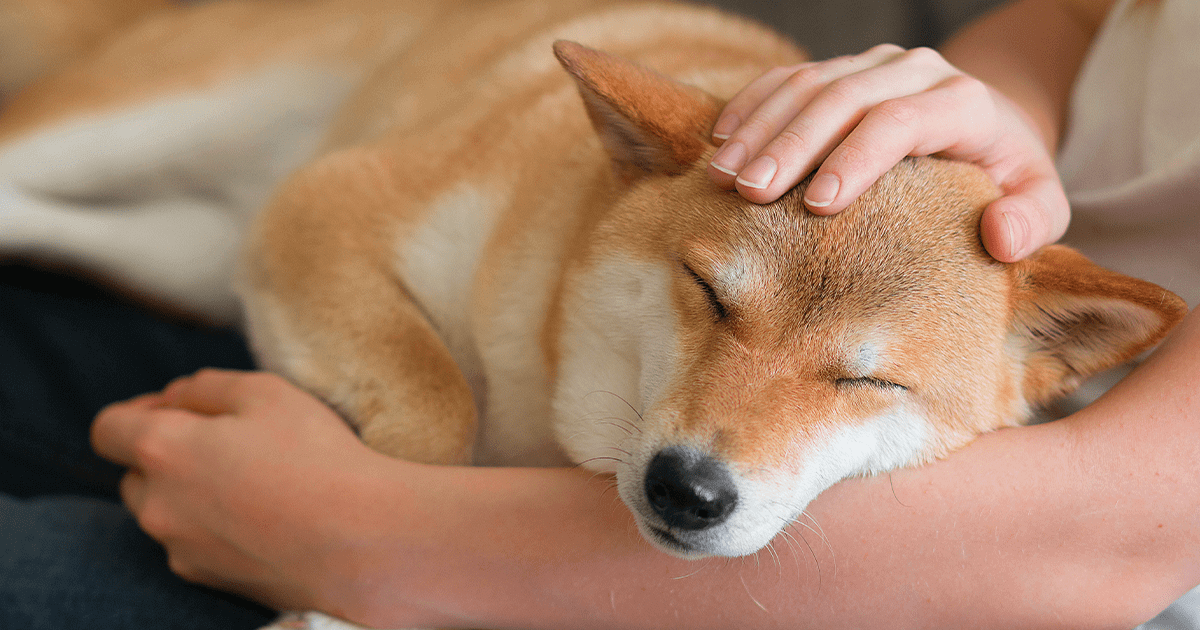If you spot a Shiba Inu in the park, you could be forgiven for thinking it’s a fox! These beautiful canines have pointed ears, red coats, black noses, wedge shaped heads – and are gorgeously fluffy! Smaller sized, these beautiful dogs have also been used for hunting in the past, as they were good at chasing through the undergrowth. Today, they are just as good at chasing through the park - and are smart, loyal, friendly dogs!
 The Shiba Inu in ancient history
The Shiba Inu in ancient history
1. The Shiba Inu can be traced back to the earliest immigrants to Japan in 7000BC – and the remains of dogs the size of a Shiba Inu have been found in sites inhabited by Jõmon-Jin people (Jõmon period 1400 BC to around 300AD) dating back to at least 500BC.
2. Studies comparing DNA of Jõmon dogs and 6 breeds of Japanese native dogs show that among the native Japanese dog breeds, the Shiba has the lowest genetic diversity and thus is most likely to be directly descended from ancient prehistoric breeds.
3. Similar looking dogs have also been found on pottery and terracotta pots that date back to the 3rd century BC.
The Shiba Inu in modern history
4. Shiba Inu are rugged dogs – they lived for thousands of years in the mountainous regions of Japan.
5. They are very popular dogs in Japan and have been declared a national treasure.
6. Shiba means ‘brushwood’ and Inu means ‘dog’ in Japanese.
7. The breed was nearly lost in WWII – bombing raids and distemper outbreaks wiped out many dogs – but breeding programmes were started and the breed was saved.
8. Other native Japanese breeds include Akita, Kishu, Hokkaido and Shikoku (Shiba Inus are the smallest of these 6 breeds).
 Their appearance
Their appearance
9. The Shiba Inu is a Spitz type breed with a curly tail.
10. They have a double coat, with the outer coat being stiff and straight and the undercoat soft and thick.
11. Their adaptable coat helps regulate their body heat. So in colder climates, you will find the Shibu Inu has a thicker, fluffier coat to help them stay warm, even in snow; in warmer climates, they have a thinner and flatter coat to help keep them cool.
12. Their coat doesn’t get tangled or matted, so it is easy to groom.
13. Regular grooming is essential as they shed heavily, particularly in spring and autumn.
14. Urajiro is a Japanese word for the unique white markings found on a Shiba Inu. These Urajiro markings can be found on the sides of the mouth and cheeks, and on the underside of the jaw, neck, chest, and stomach.
15. There may be other white markings, for example on the paws, but these are not considered Urajiro.
16. The Shiba Inu comes in four different colours:
- Red: This is the most common and most desirable. The Urajiro on the red Shiba Inu does not have sharply defined edges, but is slightly blurred. This is because the gene that controls the red colour always lightens towards the belly.
- Black & Tan: With the Urajiro factored in, the black and tan is considered a tricolour coat. All three colours can often be found in a single strand of hair starting with a white base, then becoming a reddish tan in the middle, finishing with a black tip.They frequently have an attractive white bow tie along with the Urajiro.
- Sesame: This is the most rare colour of the Shiba Inu and it must have all of the following characteristics to be considered a pure Sesame:
- Their coat must have a red base.
- It must have an even overlay of black.
- The hair must be less than 50% black.
- There can’t be any areas that contain a black patch. The overlay of black must remain even.
- There can be no black mask.
- The pattern resembles the black and tan with the black spots replaced by the black overlay.
- Cream: This is the least desirable colour of the Shiba Inu, but only because it is difficult to differentiate the Urajiro! However, a Cream Shiba Inu is very rare and is the result of two recessive genes.
17. There is an additional colour – Sable – which is not a recognised Shiba Inu colour; it is often called Sesame in error, as the pattern and colours need to follow a strict set of guidelines to get the title Sesame. If the coat is not pure Sesame, it is referred to as Sable.
 The Shiba Inu’s temperament
The Shiba Inu’s temperament
18. The Japanese have 3 words to describe the Shiba Inu personality – kaani-I (spirited boldness), ryosei (good nature) and soboku (alertness).
19. The Shiba Inu is a very confident dog, which is loyal, lively and alert.
20. They tend to form strong bonds with their owners.
21. But they can also be quite independent and territorial with a strong hunting instinct.
22. They are highly intelligent and relatively easy to train – but strong-willed, making recall training an essential part of their training and development. Using ADAPTIL Junior during training can help, as it improves socialisation and helps training in classes.
23. Their strong hunting instincts means that they will be happy to chase anything that moves.
24. Their inquisitive nature means that they love problem-solving games, particularly if there’s food involved.
25. They are expert escape artists, so if you are training them in an enclosed environment, make sure there are no holes in fences that they can escape through.
26. Their lively and attentive personality makes them a great ball game partner, so this would be a great way to enhance their recall training.
27. As for any breed, socialization and training is important from puppyhood – their independent nature means you need to work out what motivates your Shiba Inu to encourage them to learn with you
28. Whilst Shiba Inus are friendly and loyal, they have an impatient side and may quickly become provoked by children, which means they may not be the best breed to have around young children. As with any dog breed, you should always supervise your Shiba Inu when around children to make sure everyone stays safe and happy.
29. They are playful by nature and often described as being puppy-like into their senior years.
 Additional Fun Facts!
Additional Fun Facts!
30. A Shiba Inu called Mari saved her puppies and elderly owner in 2004 after an earthquake destroyed the family home in Yamakoshi. Her owner was trapped underneath a cabinet and Mari woke him up and he managed to get out and was rescued by helicopter – the story was made into a Japanese movie (A tale of Mari and her 3 puppies)
31. Shiba Inus are known for being cat-like rather than dog-like because of their independence, dignity and reserve towards strangers. Perhaps this was an attraction for our own Dr Andy Sparkes, who is one of our Happy Cat Experts and who owns a Shiba Inu!
32. A Shiba Inu’s bark is more like a ‘scream’ and when excited they tend to ‘yodel’, and they even purr when stroked.
33. A decentralised cryptocurrency was created in August 2020, called the Shiba Inu token.
34. Shiba-San was a dog in West Tokyo that helped her owners run a shop, although she has now retired. Shiba-San used her nose to open the window when people rang the bell and was loved by all the customers.
The Shiba Inu is a healthy breed, but some genetic problems that have been seen include hip dysplasia, patellar luxation and eye problems. When adopting any breed of dog, always check the health of the parents if you are getting a puppy, and make sure they are thoroughly checked by a vet. 
 The Shiba Inu in ancient history
The Shiba Inu in ancient history Their appearance
Their appearance The Shiba Inu’s temperament
The Shiba Inu’s temperament Additional Fun Facts!
Additional Fun Facts!